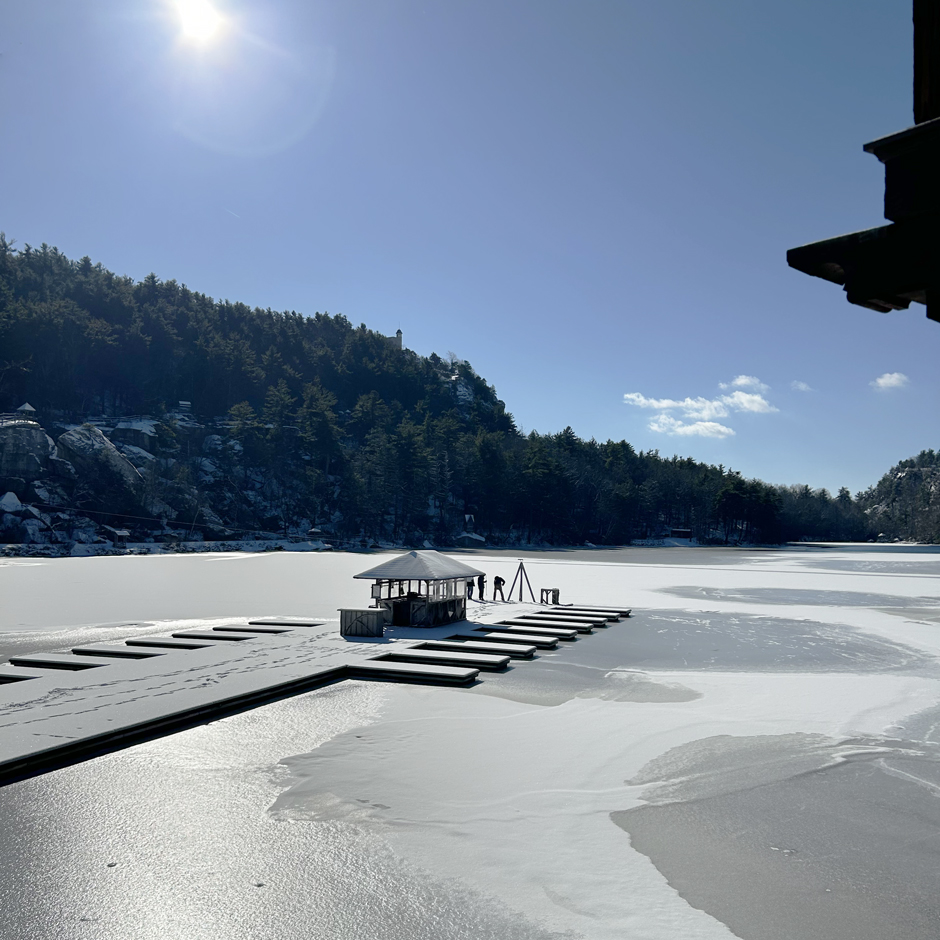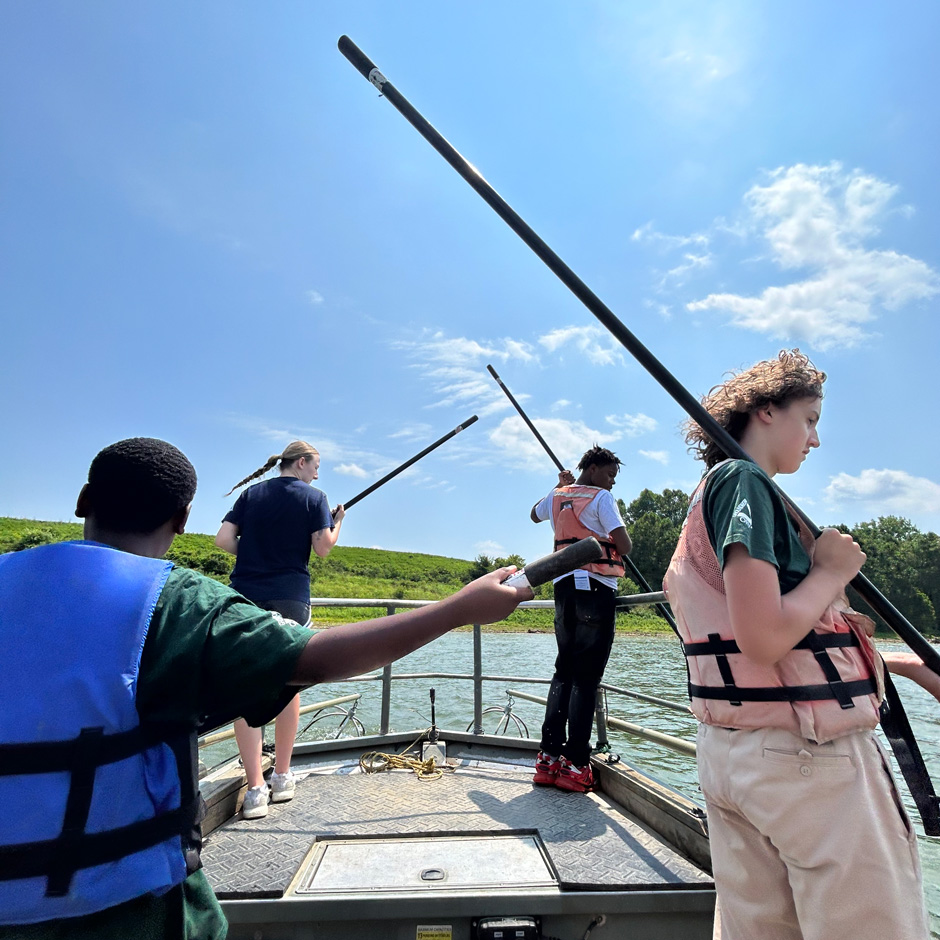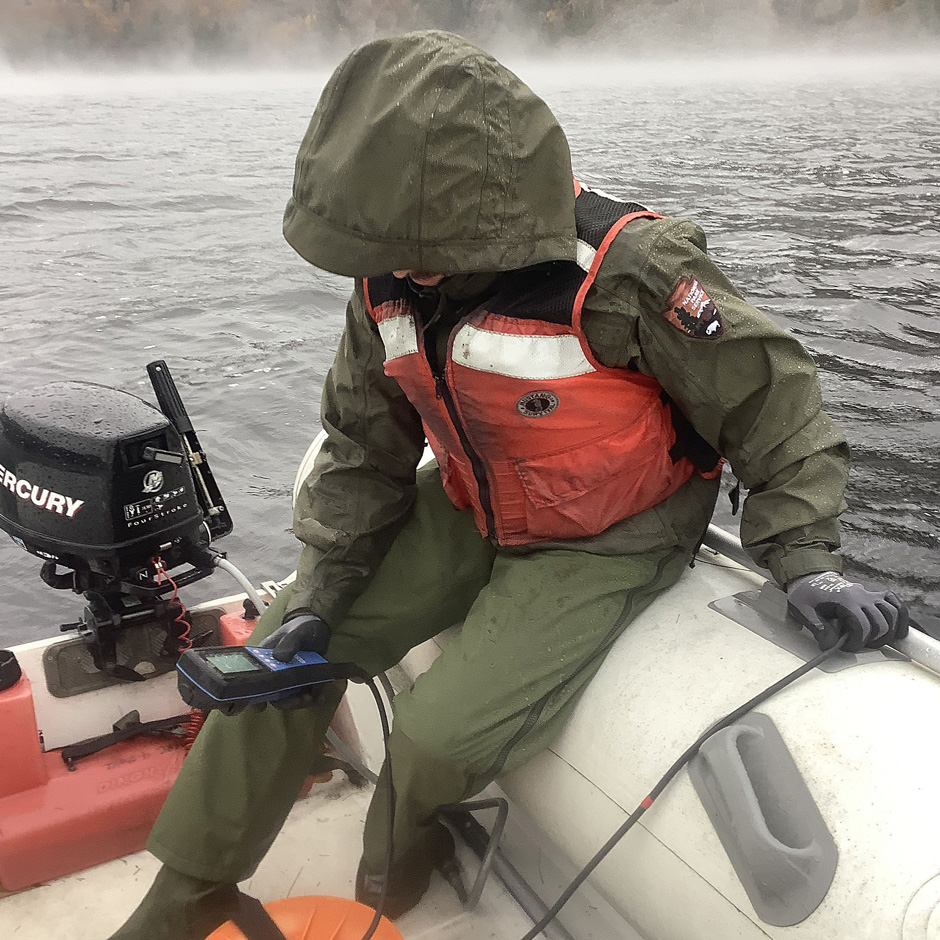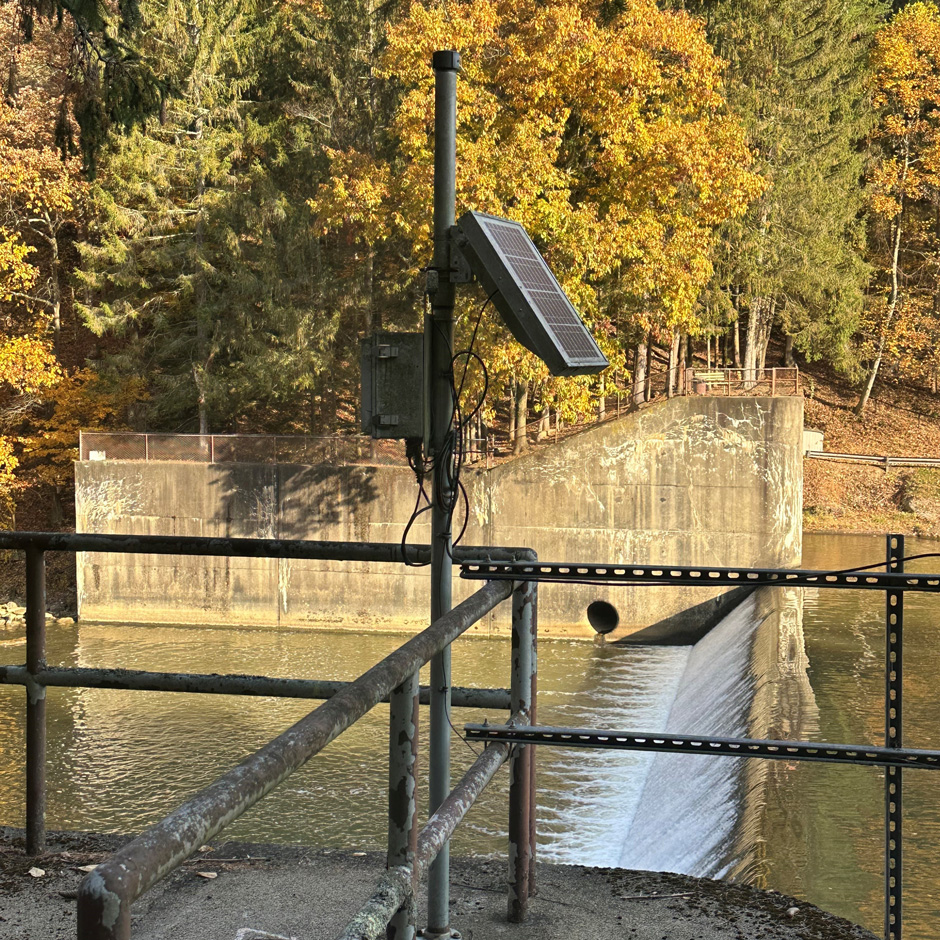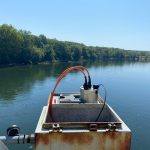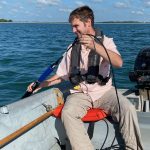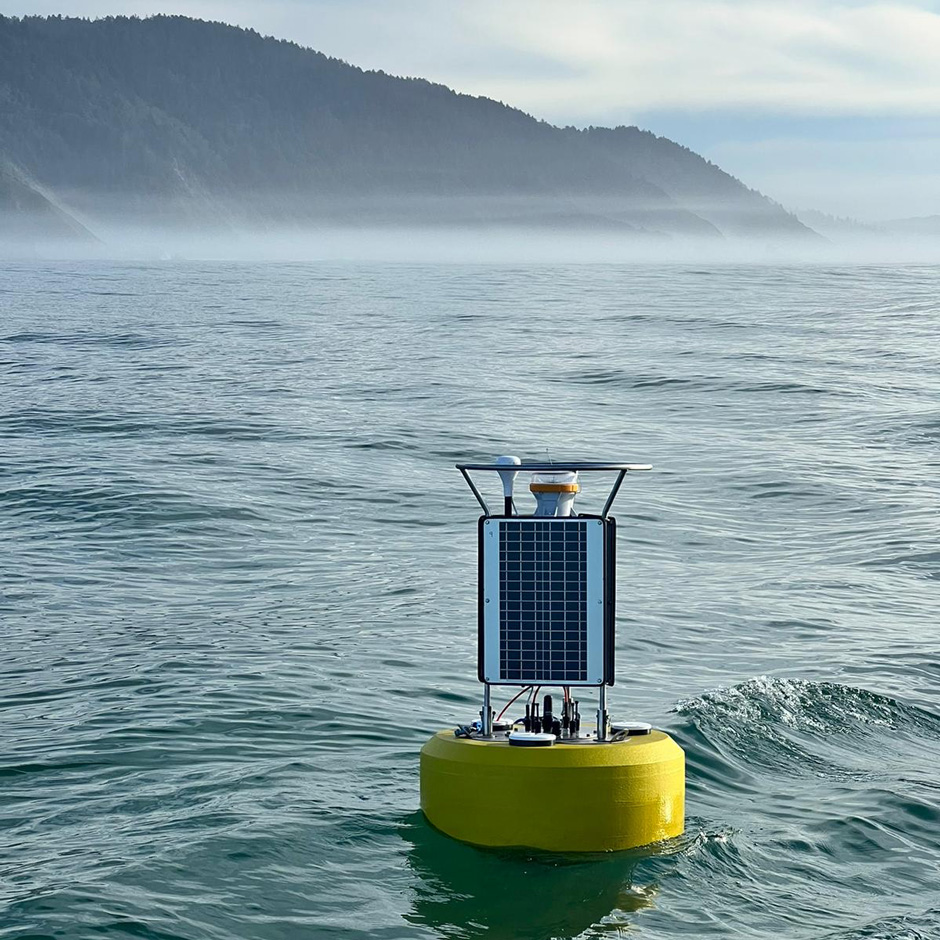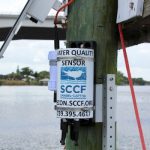Monitoring Microcystin Dynamics in Ohio Lakes
While harmful algal bloom research has become more common in freshwater lakes recently, Stone Lab is one of the oldest research groups that have focused on studying microcystin and other toxins. For more than 100 years, Stone Lab has conducted biology research and provided science education and outreach to the region. Stone Lab’s Research Coordinator […]
Read More →Developing Monitoring Solutions through Applied Research
The Center for Human GeoEnvironmental Studies | Western Kentucky University
The Center for Human GeoEnvironmental Studies (CHNGES) at Western Kentucky University (WKU) works with organizations to develop environmental monitoring solutions. Dr. Jason Polk started CHNGES at WKU after recognizing a need in his industry to help create and manage long-standing environmental monitoring programs. Polk specializes in water resources and climate research, karst environments, and reconstruction of the […]
Read More →Monitoring Ice Covered Lakes
Thin Ice Project | National Science Foundation
Mohonk Lake in the mid-Hudson Valley, New York, is one of many lakes in the U.S. that experiences annual freezes. However, ice conditions are changing rapidly now due to rising global temperatures and changes in other climate conditions. Various shifts in the physical and chemical traits of Mohonk over time have the possibility of changing […]
Read More →Conservation and Source Water Protection
Thomas More University Biology Field Station
The Thomas More University Biology Field Station is managed by a team of students, faculty, and staff who facilitate ongoing assessment and source water monitoring programs. Molly Williams is the Station Manager and spends her days overseeing various research projects, internships, and outreach initiatives alongside the station's Director, Chris Lorentz, PhD. The work of the […]
Read More →Long-Term Monitoring in Jordan Pond
Acadia National Park | Friends of Acadia | University of Maine Climate Change Institute
The United States National Park Service (NPS) is known for managing scenic landscapes and historic sites across the U.S. The parks' natural and cultural resources attract millions of visitors annually, which are important to local communities. One of the primary goals of the NPS is to protect and preserve these parks from pollution, human influence, […]
Read More →Real-Time Hydroelectric Dam Monitoring
Eagle Creek Renewable Energy
Hydroelectric dams provide clean and renewable energy to the grid, which is sorely needed in regions that rely heavily on fossil fuels. While the dams utilize a renewable resource that will remain viable as long as the waterway flows, they still put a strain on the environment. Dam monitoring can take many forms, but most […]
Read More →Remote Water Quality Monitoring in Oklahoma
Oklahoma Water Resources Board
Water is integral to all aspects of life, yet many people neglect to consider where their water comes from. Whether it is used for drinking or recreating, water feeds human and natural resources in the watershed. In order to protect all of the interconnected resources, keeping aquatic systems healthy is necessary, according to Sarah Dexter, […]
Read More →Monitoring Source Water to Optimize Water Treatment
City of Columbus Division of Water
Clean drinking water is necessary for all human life, and source water monitoring is the first step in the long process of converting source water into tap water. Millions of people rely on the work of analysts like Michele Gilkerson, a water research analyst with the City of Columbus Division of Water, to convert wastewater […]
Read More →Sediment Monitoring During the Klamath Dam Removal
Gravity Consulting
Leading up to the 21st century, the United States supported decades of dam construction in major waterways across the country. Many of these dams were hydroelectric facilities built in order to provide energy to nearby towns and cities. Unfortunately, these dams deteriorated the surrounding environment and harmed aquatic life. Many of these dams cut off […]
Read More →Safeguarding Southwest Florida with Marine Water Quality Monitoring
Sanibel-Captiva Conservation Foundation—RECON
When the Okeechobee and the Caloosahatchee River were connected by the United States Army Corps of Engineers (USACE) in the 1880s, the region underwent a variety of environmental changes. While water control locks were installed in the 1930s and 1960s, the Sanibel area in Southwest Florida still suffered from deteriorating water quality due to runoff […]
Read More →


